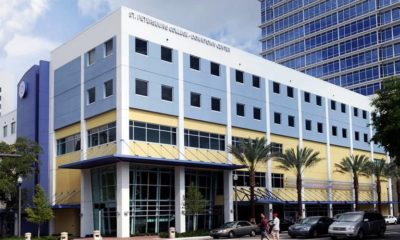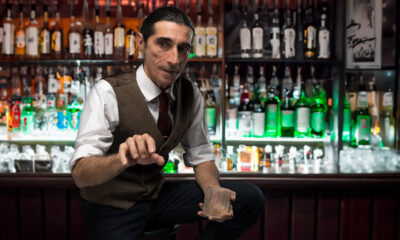Create
Colombian memories come alive in Kai Tomalin’s art
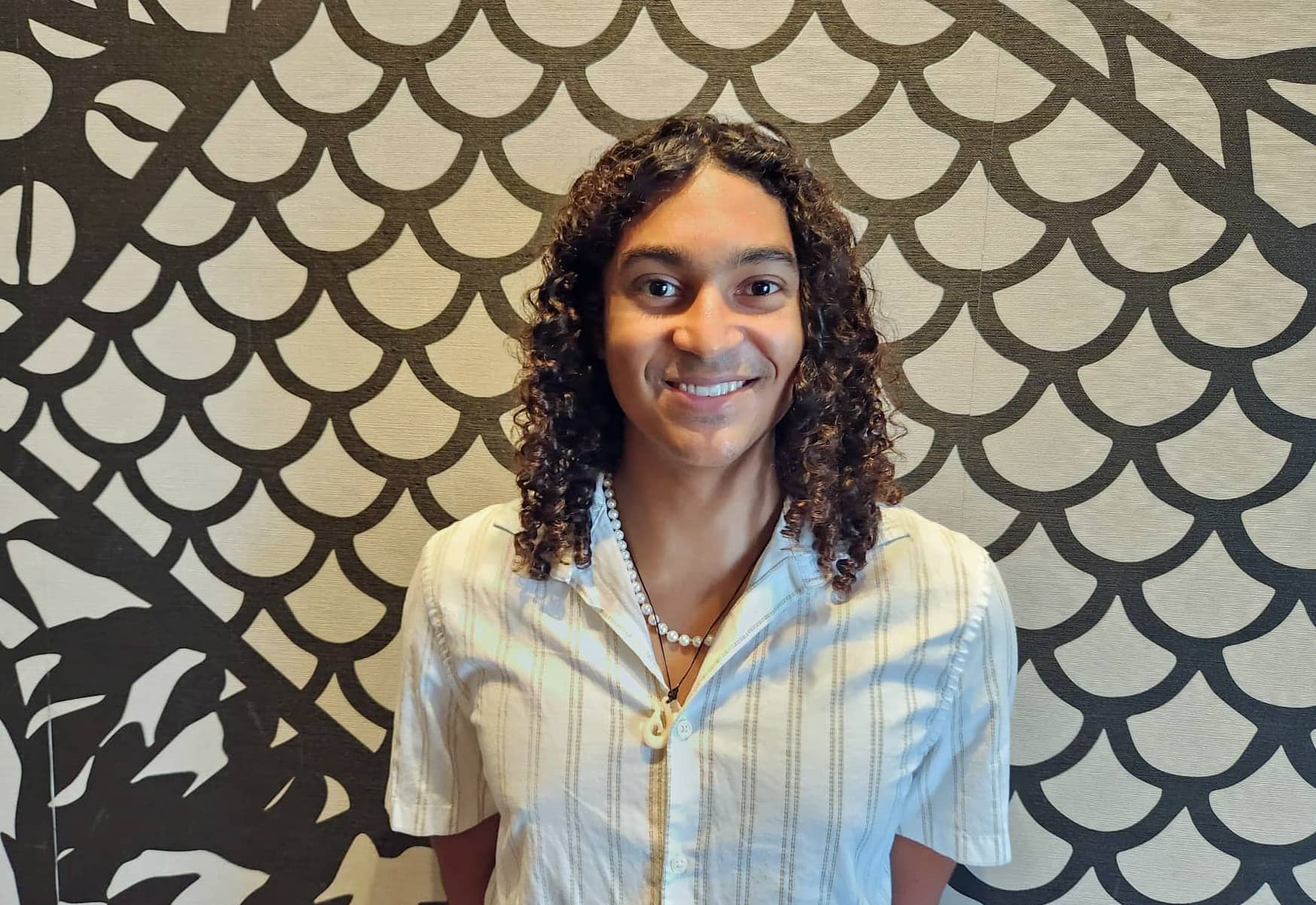
As a student at The American University in Washington, D.C., St. Petersburg native Kai Tomalin expanded his burgeoning interest in peace and conflict resolution on the global stage.
He graduated in May with a degree in International Studies, with an emphasis on real-time resolution as the antidote to upheaval and sorrow.
“I really am passionate about helping people find pathways into re-investing in creating safer communities, without using violence as a tool to do that,” Tomalin, 22, reports. “I’d like to help find ways to build stronger and more dynamic tools of non-violent communication and action.”
Where all this will lead him, Tomalin isn’t sure. “There’s a lot that I’m interested in, but I really like to explore, and ask questions,” he says. “I like to see the world and learn new things, but I’m still exploring the pathway.”
For now, he’s created an art show that’s equal part ethnographic study, “magical” conflict resolution … and storytelling. Dame tus Manos, Saturday at thestudio@620, is a collection of paintings, drawings and oral histories.
At the free 7 p.m. event, Tomalin will explain his beliefs – and take the audience through the unique project.
Dame tus Manos, Spanish for “give me your hands,” began with Ernestina Vargas, the Colombia-born mother of a longtime family friend.
(Kai’s mother is former St. Pete deputy mayor Kanika Tomalin; his father, the late Tampa Bay Times journalist Terry Tomalin.)
Vargas and her family were among those displaced from their longtime homes during La Violencia, the 10-year civil war that tore Colombia apart in the 1950s.
In St. Petersburg, she shared her very vivid memories with Kai Tomalin, who refers to Vargas as his abuelita (“little grandmother”).
The term for this kind of retention is placemaking – when someone immigrates from a homeland to a host land, they keep a little bit of where they came from inside them.
So it continues to live.
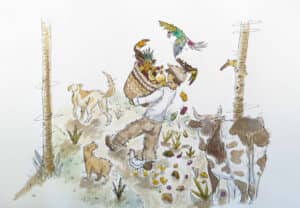
“I call it enchanted ethnography,” Tomalin says, “because it looks at the way that magical realism is used as a tool in the preservation of place and culture within the Colombian diaspora.
“Your environment influences everything from the way you cook, to the way you produce art, the way you pray, you sing, you dance. And so access to physical space is a key component of understood identity among Colombians.”
To begin, he wrote down the stories his abuelita told him; then he illustrated them, taking an unusual step that tied the works directly to Vargas’ beloved home region.
“They’re all done using natural pigments – plants, vegetables, flowers, fruit, spices – that were significant to the valley that my abuelita grew up in.”
His research was painstaking. Since he was unable to travel to Colombia, Tomalin ordered the materials online. Some, he was able to track down through area grocers.
After chopping, grinding and drying, Tomalin created “watercolors” with which to paint. Not just with water, though – he sometimes used coffee for the pigment mixtures. “There’s a lot of chemistry and experimentation to get the colors just right. But once I did, it became almost like an intuitive process. I figured out the right way to add stuff in, and now it’s like second nature. It was literally like learning how to let the colors speak to you.
“You’d be surprised at how many colors you can make from one pot of coffee.”

The end result is a combination of memory, both physical and spiritual, and creative vision. Magical realism. Magic, for many Colombians, is very real. “Nature is magic,” Tomalin says.
“And so when you leave your homeland, and you carry those small pieces with you in your heart and your mind, that’s magic too.”
It almost felt, Tomalin explains, like a “sacred task” to preserve and enhance Vargas’ memories of the home she had to leave behind. “But that she also chose not to leave behind, in the sense that she was able to carry it with her.”
The title, he adds, was obvious right from the start.
“Throughout my childhood, when I’d hear these stories about this faraway place called Colombia, and all the birds and the bears that lived there, and the plants and everyone else, she would always start by taking my hand. And she’d hold my hands.
“And so hands have been a very significant way that I’ve connected with my abuelita, and my godmother, because it’s with our hands that we create art, it’s with our hands that we work in the garden.
“Our hands are the way that we can connect with the magic of the world. The use of hands, to feel the world around you, is magic in itself, if you let it be magic.”
Information at thestudio@620 website.
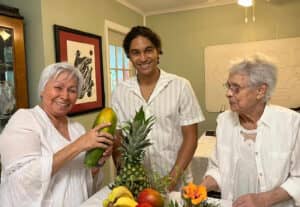
From left: Albaluz Marasco (Kai Tomalin’s godmother), Tomalin and Marasco’s mother Ernestine Vargas. Photo provided.




